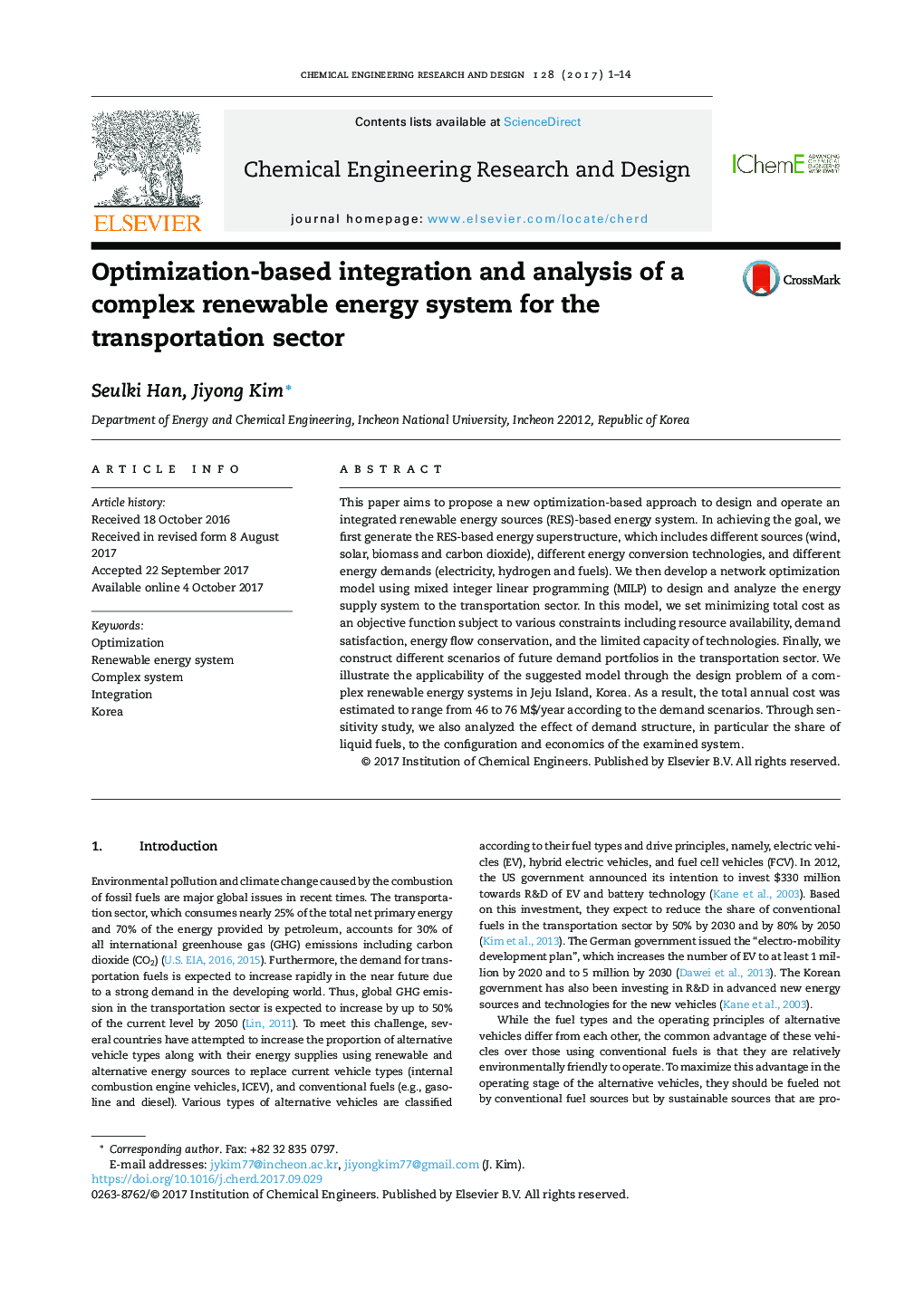| Article ID | Journal | Published Year | Pages | File Type |
|---|---|---|---|---|
| 7006361 | Chemical Engineering Research and Design | 2017 | 14 Pages |
Abstract
This paper aims to propose a new optimization-based approach to design and operate an integrated renewable energy sources (RES)-based energy system. In achieving the goal, we first generate the RES-based energy superstructure, which includes different sources (wind, solar, biomass and carbon dioxide), different energy conversion technologies, and different energy demands (electricity, hydrogen and fuels). We then develop a network optimization model using mixed integer linear programming (MILP) to design and analyze the energy supply system to the transportation sector. In this model, we set minimizing total cost as an objective function subject to various constraints including resource availability, demand satisfaction, energy flow conservation, and the limited capacity of technologies. Finally, we construct different scenarios of future demand portfolios in the transportation sector. We illustrate the applicability of the suggested model through the design problem of a complex renewable energy systems in Jeju Island, Korea. As a result, the total annual cost was estimated to range from 46 to 76 M$/year according to the demand scenarios. Through sensitivity study, we also analyzed the effect of demand structure, in particular the share of liquid fuels, to the configuration and economics of the examined system.
Related Topics
Physical Sciences and Engineering
Chemical Engineering
Filtration and Separation
Authors
Seulki Han, Jiyong Kim,
